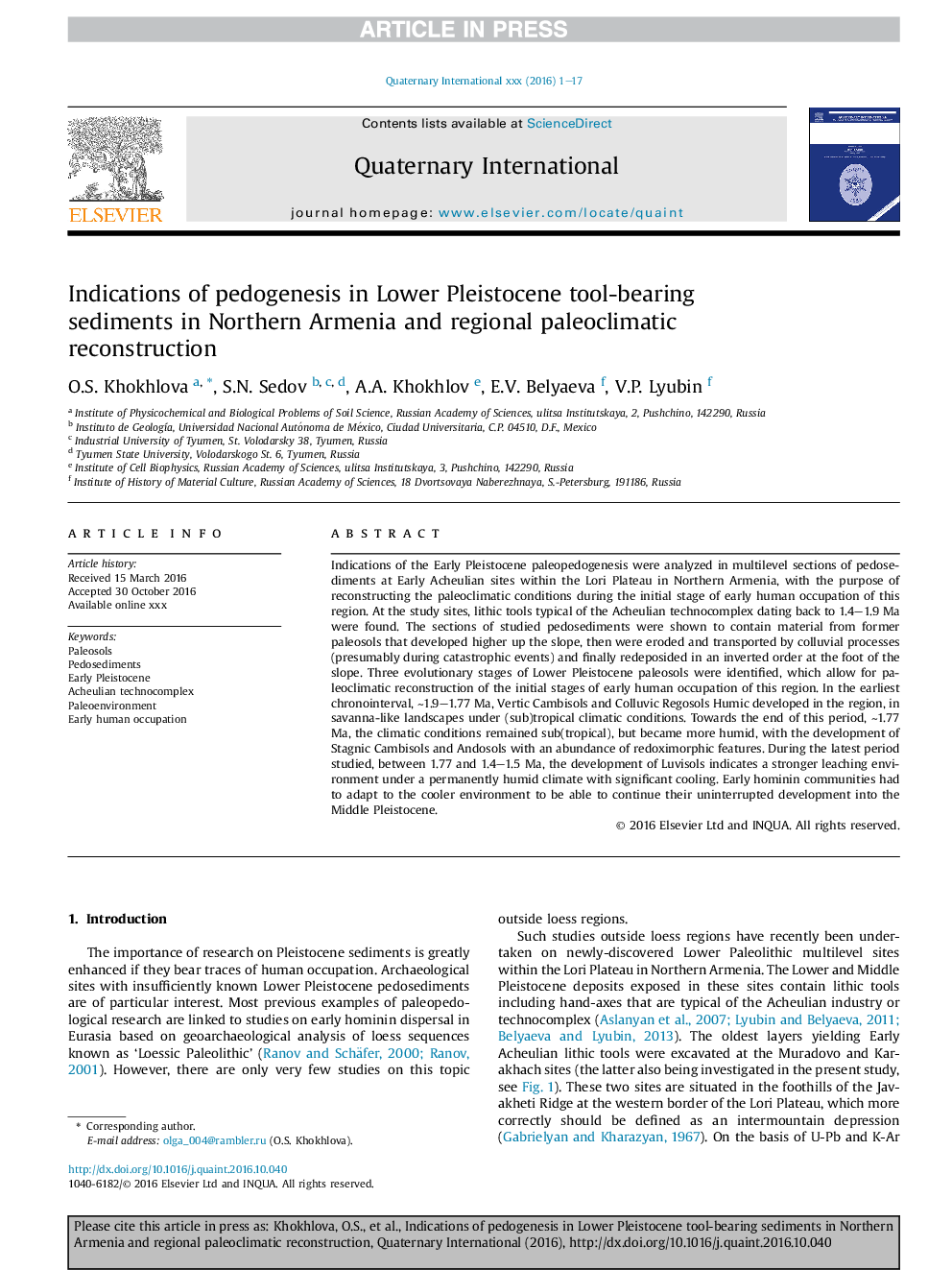| Article ID | Journal | Published Year | Pages | File Type |
|---|---|---|---|---|
| 7450346 | Quaternary International | 2018 | 17 Pages |
Abstract
Indications of the Early Pleistocene paleopedogenesis were analyzed in multilevel sections of pedosediments at Early Acheulian sites within the Lori Plateau in Northern Armenia, with the purpose of reconstructing the paleoclimatic conditions during the initial stage of early human occupation of this region. At the study sites, lithic tools typical of the Acheulian technocomplex dating back to 1.4-1.9 Ma were found. The sections of studied pedosediments were shown to contain material from former paleosols that developed higher up the slope, then were eroded and transported by colluvial processes (presumably during catastrophic events) and finally redeposided in an inverted order at the foot of the slope. Three evolutionary stages of Lower Pleistocene paleosols were identified, which allow for paleoclimatic reconstruction of the initial stages of early human occupation of this region. In the earliest chronointerval, â¼1.9-1.77 Ma, Vertic Cambisols and Colluvic Regosols Humic developed in the region, in savanna-like landscapes under (sub)tropical climatic conditions. Towards the end of this period, â¼1.77 Ma, the climatic conditions remained sub(tropical), but became more humid, with the development of Stagnic Cambisols and Andosols with an abundance of redoximorphic features. During the latest period studied, between 1.77 and 1.4-1.5 Ma, the development of Luvisols indicates a stronger leaching environment under a permanently humid climate with significant cooling. Early hominin communities had to adapt to the cooler environment to be able to continue their uninterrupted development into the Middle Pleistocene.
Related Topics
Physical Sciences and Engineering
Earth and Planetary Sciences
Geology
Authors
O.S. Khokhlova, S.N. Sedov, A.A. Khokhlov, E.V. Belyaeva, V.P. Lyubin,
